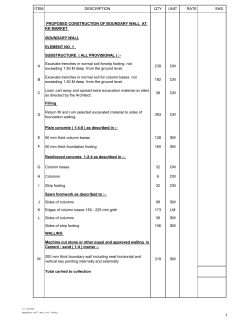
Homework 5
APPM 5480, Methods of Applied Math: Asymptotics, HW 5, due 4/6 Spring 2015 1. Locate the position of the boundary layer for the boundary-value problem y 00 + y 0 = a, y(0) = 0, a = O(1), || 1, y(1) = 1. (1) Then find a uniformly valid solution, correct to first order in . 2. Consider the boundary value problem y 00 − (2 − x2 )y = −1, 0 < 1, (2) y(−1) = y(1) = 0. (a) Show that the outer solution cannot satisfy the boundary conditions at either boundary, and hence that there must be boundary layers at both x = ±1. (b) Use the scaled inner variables ζ± = (1 ∓ x)/δ() to show that δ() = O(1/2 ) for a maximal balance. (c) Find a uniformly valid zeroth order solution. 3. The boundary value problem y 00 + xy 0 − y = 0, y(−1) = 1, −1 ≤ x ≤ 1, y(1) = 2, 0 < 1, (3) exhibits an internal boundary layer. (a) Compute two outer solutions, each one satisfying a different boundary condition. (b) Introduce the inner variable ζ = x/α . Determine α via the distinguished limit. (c) Find the leading order inner solution and match it to both outer solutions. What is the magnitude of the inner solution? 4. The asymptotic solution of the nonlinear problem x3 y 0 = (1 + )x + 22 y 2 , y(1) = 1 − , 0 ≤ x ≤ 1, (4) has two nonuniform regions embedded in the outer region, and thus requires three expansions. (a) Calculate two terms of the outer expansion. (b) Choose a new scaled variable suggested by the outer expansion and then calculate two terms for the middle expansion. Match the middle expansion to the outer expansion. (c) Choose a new scaled variable suggested by the middle expansion and then calculate one term of the inner expansion. Match the inner expansion to the middle expansion. 1
© Copyright 2025





















